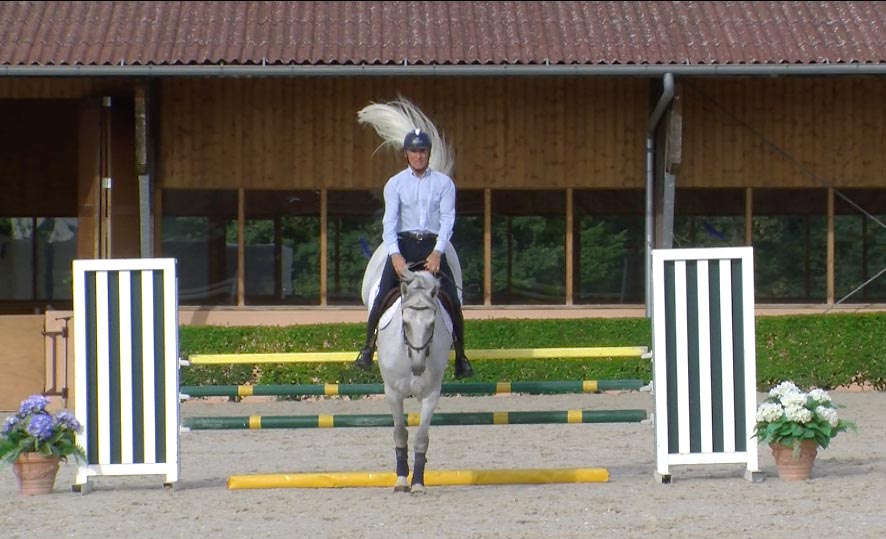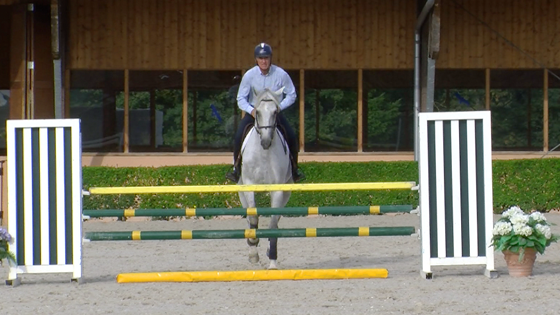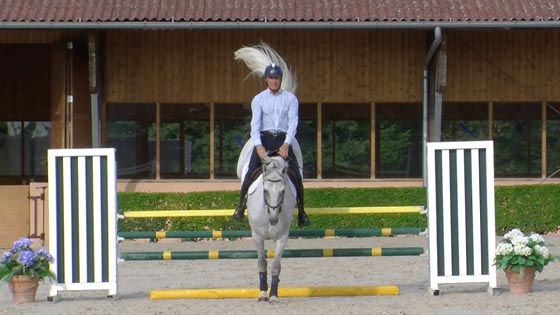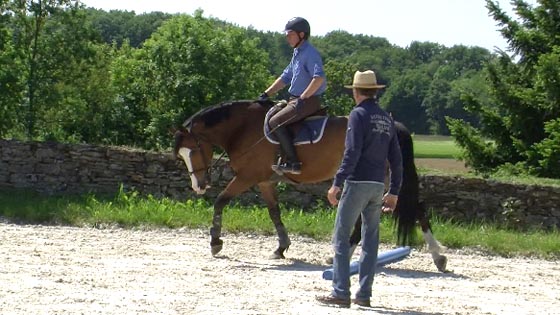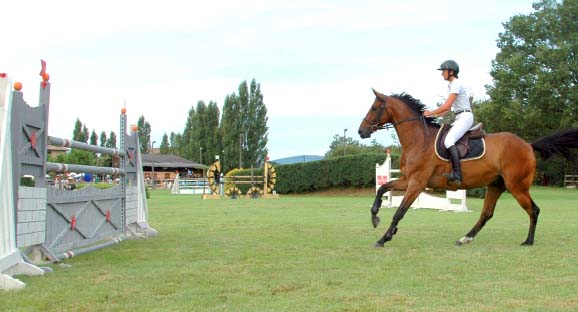Choose the winner view!
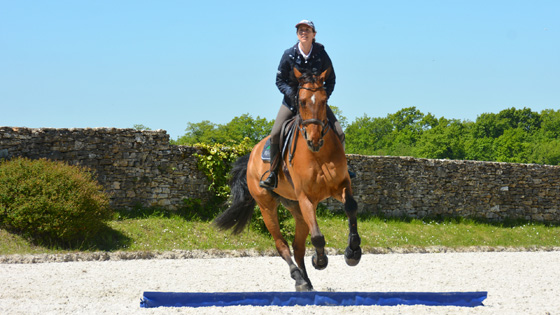
To choose the large angle view is to choose the winner view : The body gets upstraight, the chest opens up, the breathing is set free, the brain gets oxygenated…..That is the way physical and mental tensions clear up.
Here is my tip to make great and quick progress : Look up and afar ! That way you will rise above events and you willl be able to tackle the difficulties you encounter. To choose the large angle view is to choose the winner view : The body gets upstraight, the chest opens up, the breathing is set free, the brain gets oxygenated…..That is the way physical and mental tensions clear up.
It is impossible to imagine to what extent simply «disconnecting» the eyes can improve one’s seat, help the understanding of a movement and improve harmony with the horse… The most rigid rider can become supple over a very short period of time. Once again, rigidity and hardness are, above all, mental and not physical, as most of us tend to believe.
«All riders are capable of using their wide-angle view when approaching, during and after a fence»...Except the blind, you’ll answer. However, the blind, in fact, sit up straight, supple and relaxed. They are totally involved in paying attention to their sensations.
Everyone is capable of using a wide-angle view. I have tested this on riders of all ages and all levels. I have come across riders with totally stuck and rigid seats, blocked shoulders and gritted jaws… It would have taken ten years to solve all their problems. In two sessions, we achieved exceptional results simply working on their minds… though their eyes. I never even mentioned their seat, their horses, or their manner of approaching fences, until they were able to control their eyes. As they repeated the exercises, looking in the right direction, their movements became totally relaxed and above all, they managed to establish a trusting relationship with their horses. Absolutely everyone can achieve results like this. Take my word for it: « You won’t get it cheaper anywhere else! « The energy used by a tense rider and horse attempting to fight these rigidities is immense, compared to the small effort of learning to control one’s eyes. This allows real harmony with the horse; it is more attractive, less tiring and not at all expensive!

